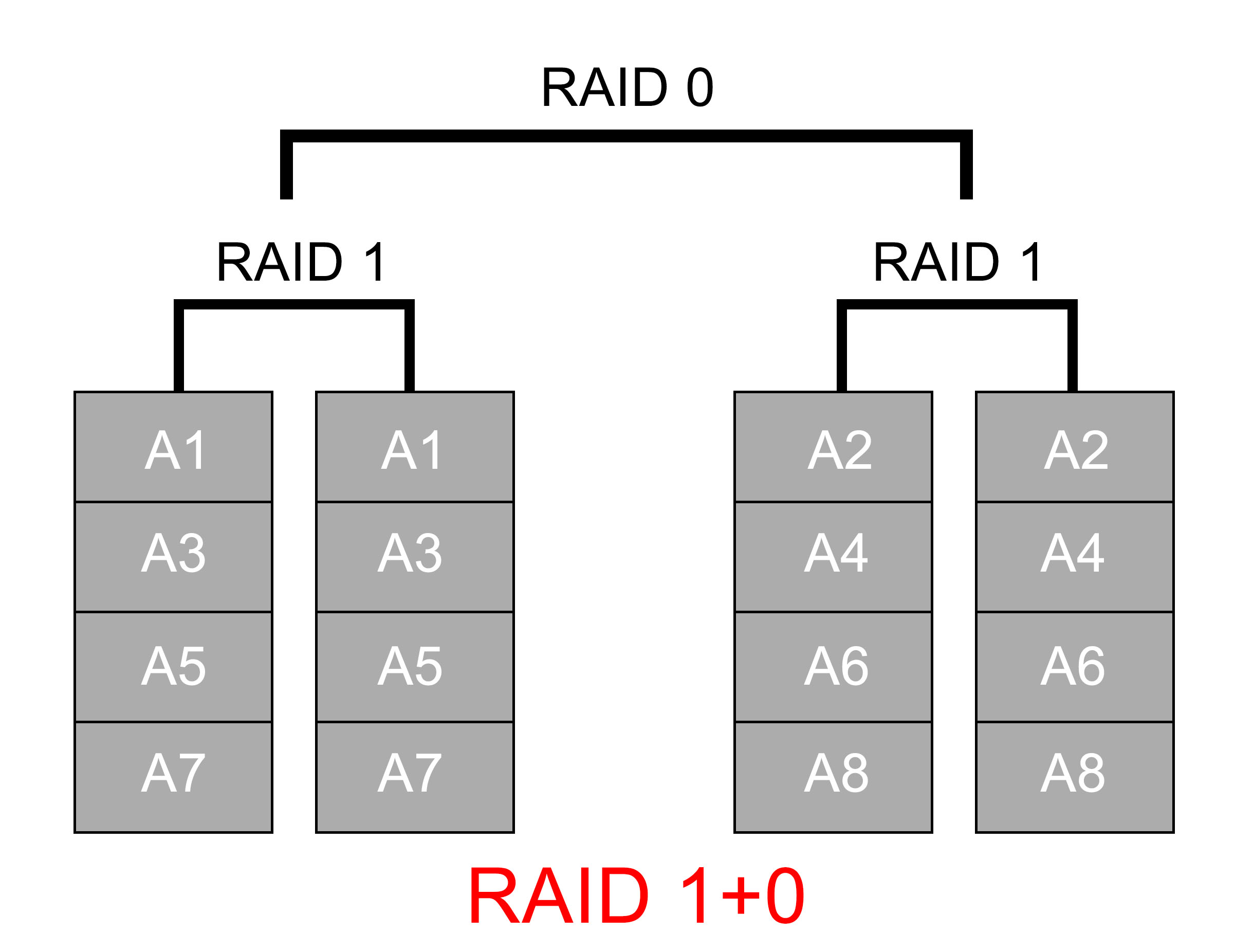RAID configurations are an array of drives and sharing the information over the array. Some RAID configurations are useful to have in the case that a drive fails, you may have a backup.
RAID stands for Redundant Array of Independent Disks.
RAID can be software based, meaning that no special hardware is required. It’s usually a feature of the operating system. You simply install your hard drives and configure the RAID from your operating system. Software based RAID is usually provides lower performance than hardware based.
Hardware-based RAID is a separate piece of hardware or hard drive controller that’s inside of your computer that handles the RAID functions. RAID configuration is done outside of the operating system and the RAID is invisible to the operating system. Hardware-based RAID is high performance and designed for speed.
RAID 0: Striping
- Block level striping without parity or mirroring.
- Requires at least 2 disks
- File blocks are split between two or more physical drives
- Improves performance with data being able to be written quickly, but provides no redundancy or error checking
- More disks in array means higher bandwidth but greater risk of data loss
RAID 1: Mirroring
- Mirroring without parity or striping
- Requires at least 2 disks
- Data written identically to multiple disks
- Improves performance for read intensive applications
- Provides for high redundancy, 1 drive can fail
- Requires high disk utilization, the amount of disk space needed doubles.
RAID 5: Striping with Parity
- Block level striping with distributed parity
- Requires at least 3 disks
- 1 drive can fail
- Distributes parity along with the data and requires all but one to be present to operate.
- Provides for efficient use of disk space. Files aren’t duplicated but space is still used for parity.
- Parity calculation may affect performance.
RAID 10: Nested RAID 1+0
- Mirrored sets in a striped set
- Creates striped set from a series of mirrored drives
- Requires at least 4 disks (must have even number)
- Array can sustain multiple drive losses as long as no mirror loses all of it its drives.
- Combines the performance of RAID 0 with the redundancy of RAID 1
